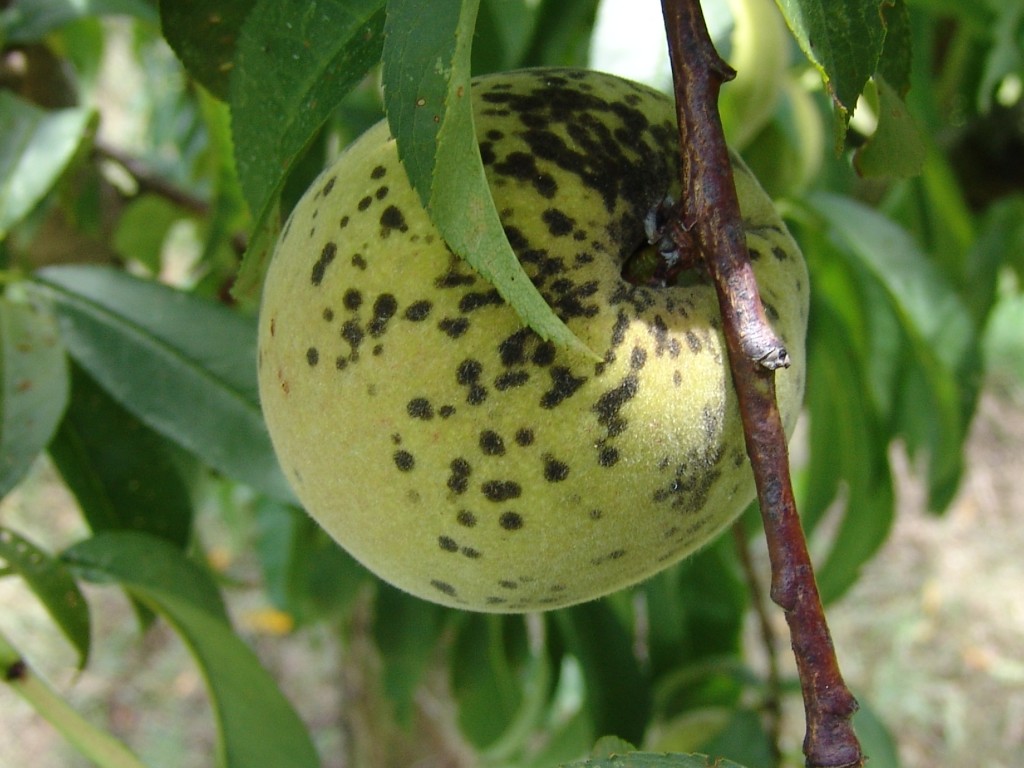By Clint Thompson
Avoiding fungicide resistance in peach production is front and center of Phil Brannen’s presentation this week at the Southeast Regional Fruit and Vegetable Conference in Savannah, Georgia.
The University of Georgia Cooperative Extension Fruit Disease Specialist cautions producers about overusing products like Miravis to protect against peach scab disease.
“The thing about Miravis that’s tempting is it’s really, really good on peach scab. If you absolutely need it for peach scab, if you’re having a problem with peach scab, I’d use it. But we don’t want to overuse it because of the potential for resistance development,” Brannen said.

Peach scab is a fungal disease that thrives in a wet environment. It’s easily identifiable by scabs or spots of greenish to black color that appear on the fruit, twigs, shoots and leaves. Cracking can occur, which allows for additional pathogens to invade the fruit and cause damage. If left untreated, it can degrade the crop’s aesthetic appeal.
Brannen researched Miravis and its effectiveness on peach scab. It yielded the best management option for growers.
“It’s definitely the best product available for peach scab control,” Brannen said. “If they’ve got a problem with peach scab, if they know it’s going to rain a whole lot at petal fall and shuck split, chlorothalonil generally is effective. But it’s a contact material and will wash off especially if it rains right after you put it out. You might want to consider putting out one application at shuck split of Miravis, but we’re really warning them not to overdo that.
“We’re scared about resistance development. We want to save all those products for brown rot control.”









